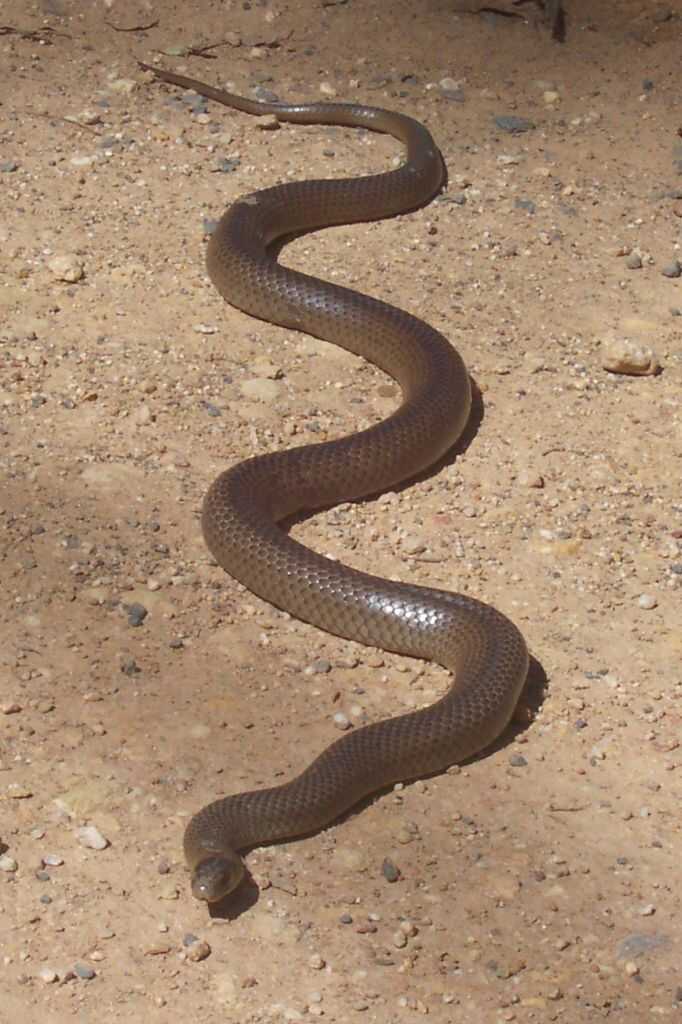{{{description}}}
(Chelodina longicollis) This is an east Australian species of snake-necked turtle. It grows about 21-28 cm long. It as a black broad and flattened carapace that has a deep medial groove. Its cream to yellow plastron is very broad iwth black sutures. Its neck is black on top and cream below. It bends its head sideways into the shell. The turtle got its common name "stinker" from the smelly fluid from its musk glands which it emits when feeling threatened. It feeds on insects, worms, tadpoles, frogs, small fish, crustaceans, and molluscs.
Image by John Wombey, CSIRO

(Chelydra serpentina) The turtle is about 25-47 cm long and lives in shallow ponds or streams. Its carapace (upper shell) is ridged. It has powerful beak-like jaws, and a highly mobile head and neck (serpentina means "snake-like"). Its nostrils are on the very tip of the snout, functioning as snorkels. It can have quite a combative disposition when out of water, but usually flees and hides when in the water. It feeds on plants and animals, such as invertebrates, fish, frogs, reptiles, birds, and small mammals. They can be observed when basking on fallen logs in early spring.
Image by Leejcooper
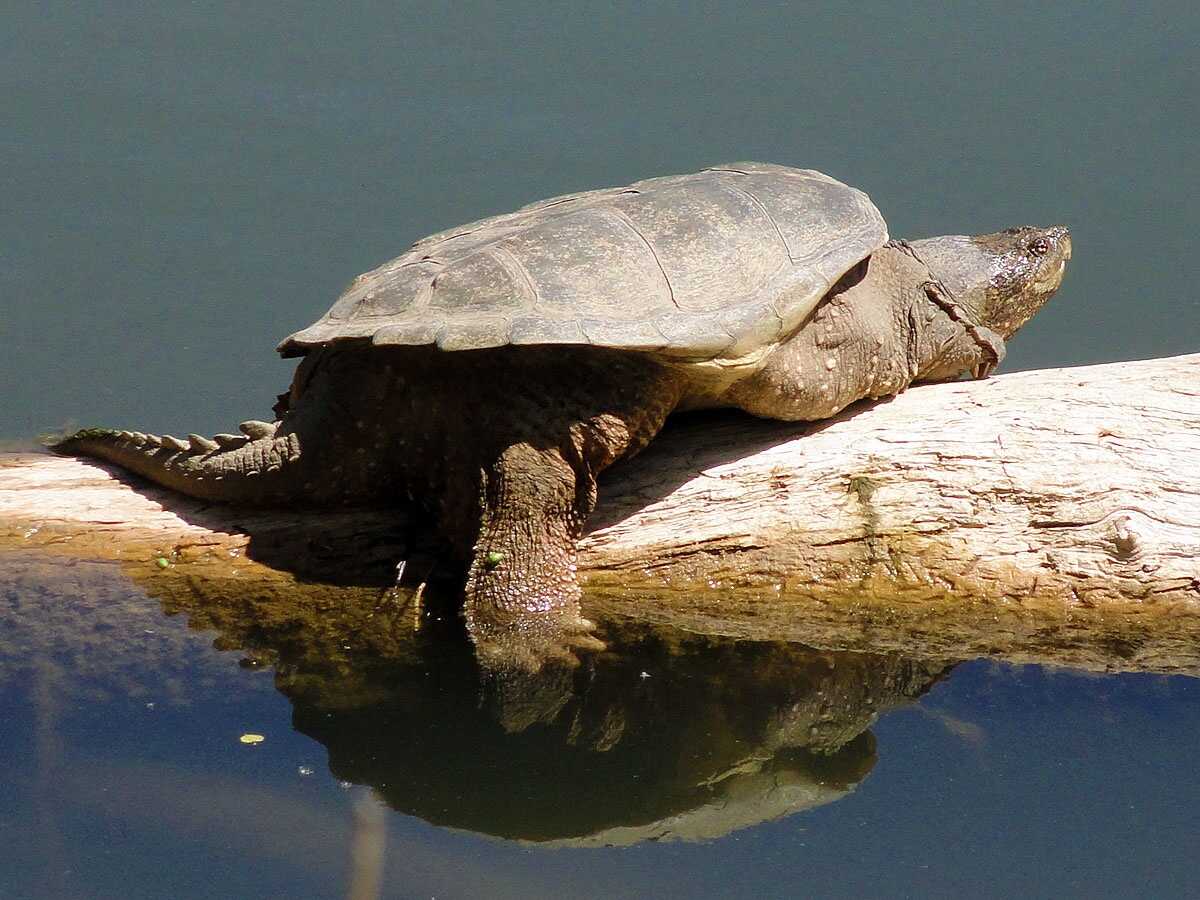
(Diplodactylus vittatus) This small nocturnal terrestrial lizard which is native to Australia, widely spread across QLD, VIC, and NSW. It is up to 6 cm (9 with the tail) long and has a dark brown body with pale notched zigzag strips from the back to the tip of its short plump tail. Its body is covered om tiny granular scales, its eyes have no lids.
Image by Matt

(Underwoodisaurus milii) This gecko got its name from its distinctive plump tail and sharp, barking defensive call. It is 12-14 cm long and is reddish-brown with bands of white and yellow spots. Its underparts are paler. Its original tail is black and has several pale bands, while the regenerated tail has little pattern.
Image by Tnarg 12345
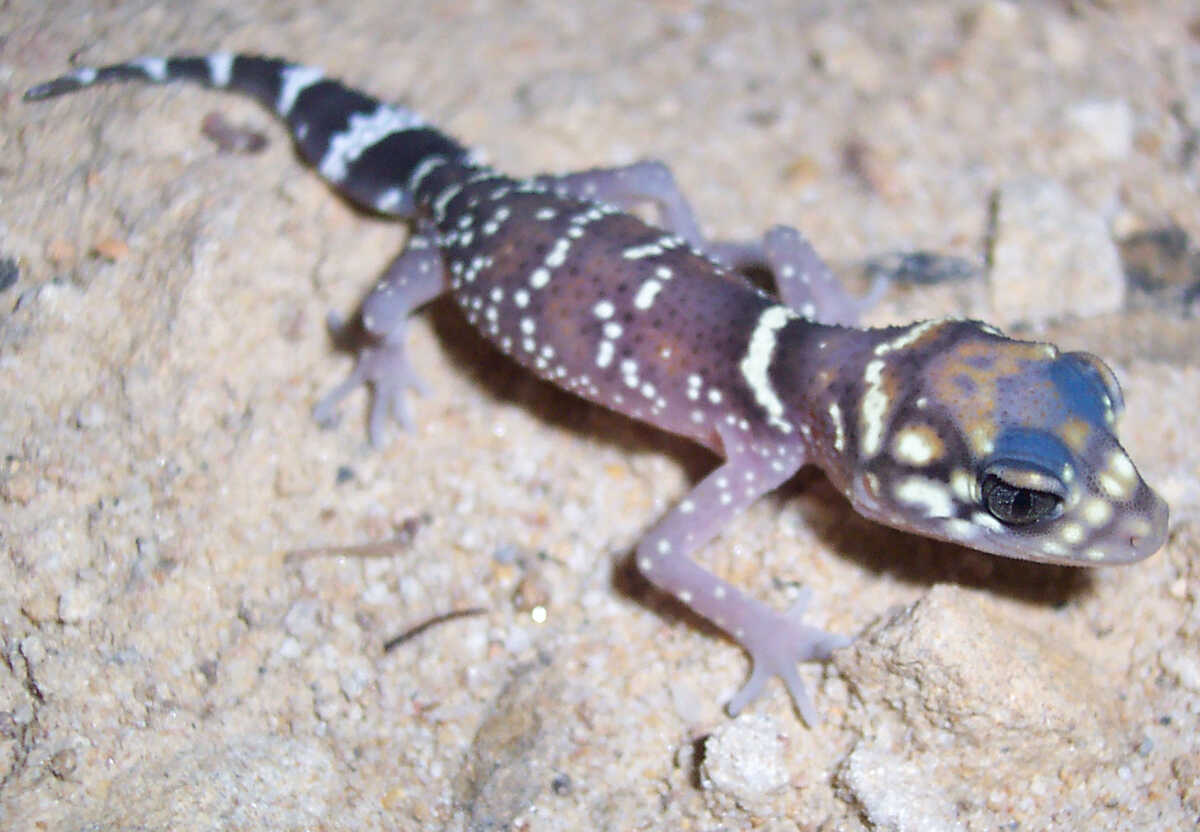
(Anomalopus leuckartii) This skink is found in New South Wales and Queensland in Australia. it is a smallish smooth-scaled burrowing lizard. It mostly lives in moist soil.
Image by Stephen Mahony
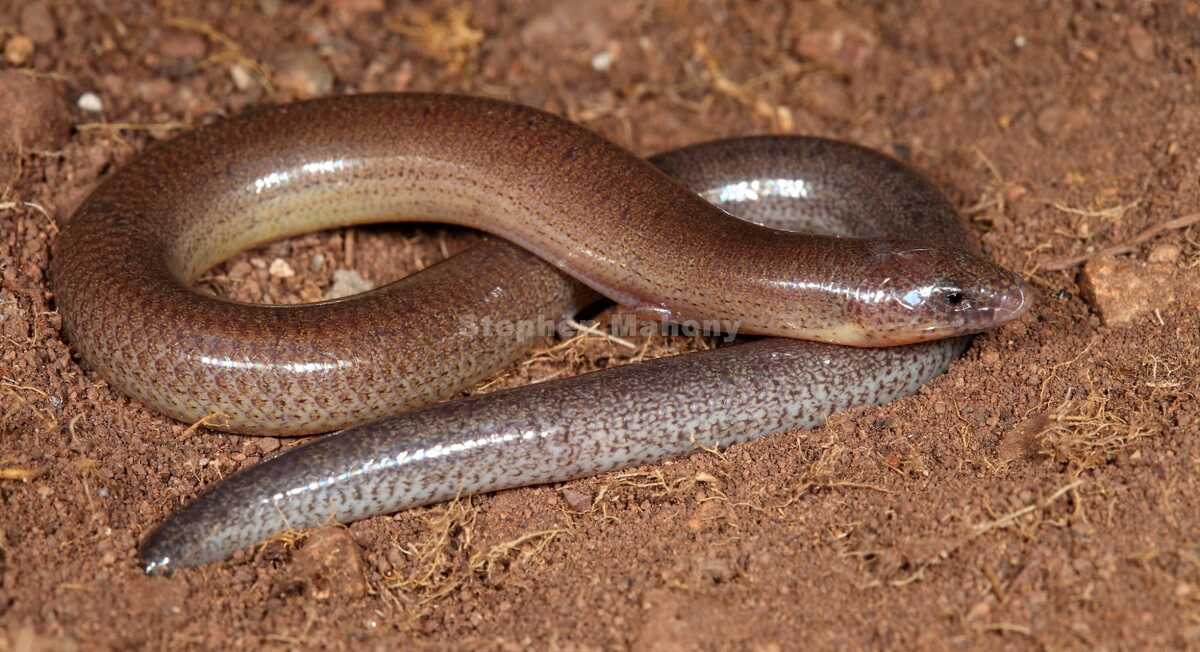
(Lygisaurus foliorum) Its body is 4 cm long with a 4 cm tail. Its body is pale to dark brown with flecks with reddish-brown head and tail. The belly and limbs are white. Flanks are also white but become flushed with orange on breeding males.
(Ctenotus taeniolatus) This medium-sized skink can be found in open bushland and heathland in rocky and sandy environments, often basking near an immediate cover. It is about 30 cm long olive-brown upper parts with white and dark brown stripes from head to tail. It has dark brown sides that are spotted with white, a black and white-edged vertebral band, and a white dorsolateral band edged in black. It feeds on insects and worms.
Image by Greg Schechter

(Egernia frerei) This large skink can be found on the east coast of Australia from Coffs Harbour to the tip of Cape York in scrubland, rainforests and woodlands. It is up to 40 cm long which makes it one of the largest skinks in Australia. It can be found in range of colours from nearly black, through various shades of brown to a light fawn colour. It pairs for life and often lives in small groups. It feeds on insects, snails, spiders, smaller reptiles and various plant fruits.
Image by dad1_
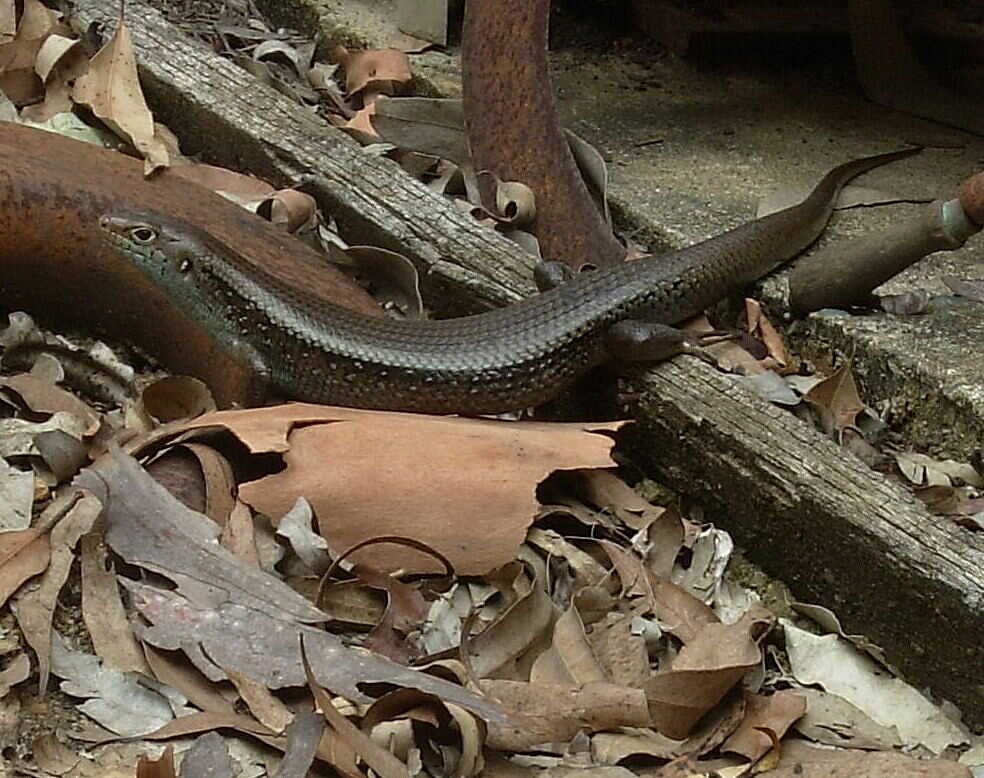
(Eulamprus quoyii) This skink is endemic to Australia and is usually found close to slow-flowing creeks and estuaries. It grows up to 28 cm in length. It has an olive-brown back with scattered small black spots along the body and tail and a narrow golden or yellow stripe runs from its eye down the side of its body. Its lower flanks are creamy yellow with numerous scattered small black spots.
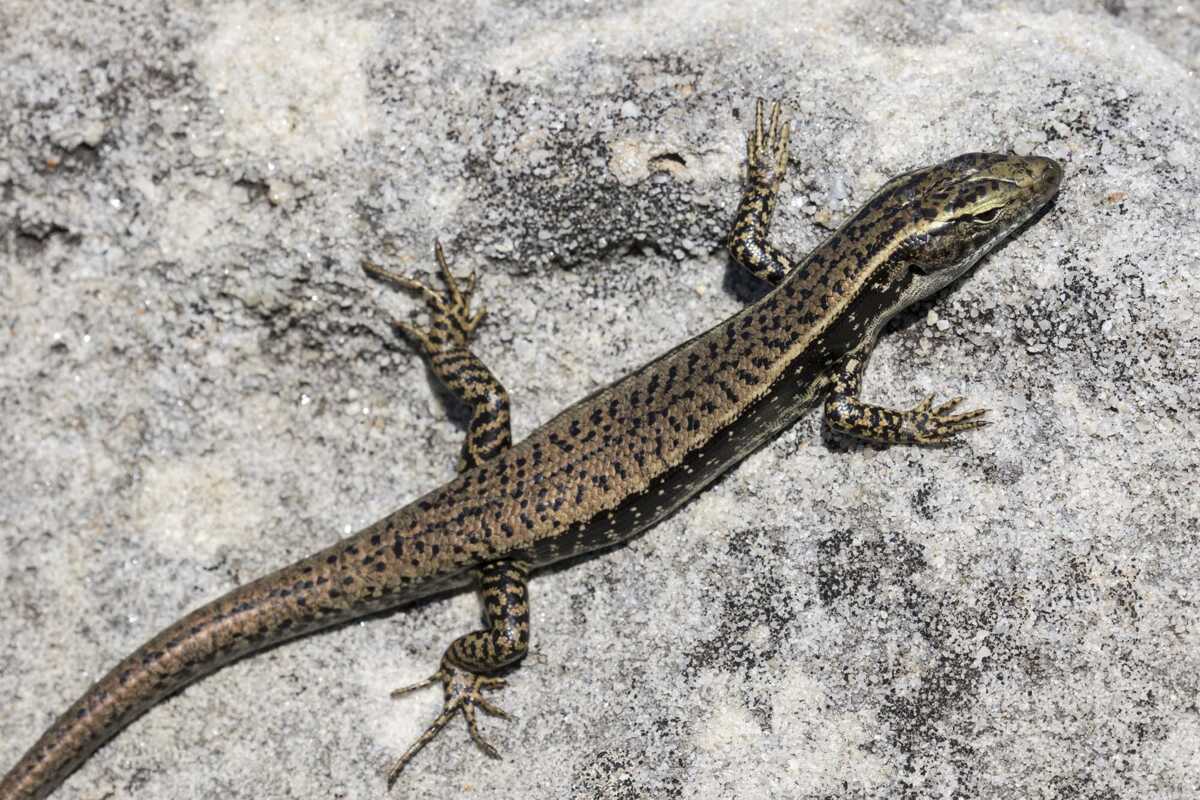
(Lialis burtonis) This lizard is endemic to Australia (found everywhere accept Tasmania) and Papua New Guinea and can be found on the ground in leaf litter and other surface debris. It grows to about 29 cm in length and has an even longer tail. It can be found in cream to grey to brown colours, and occasionally in black. Not all have stripes or spots. It has a long snout and a wedge-shaped cylindrical tail. It feeds on other lizards.
Image by Matt Clancy Wildlife Photography
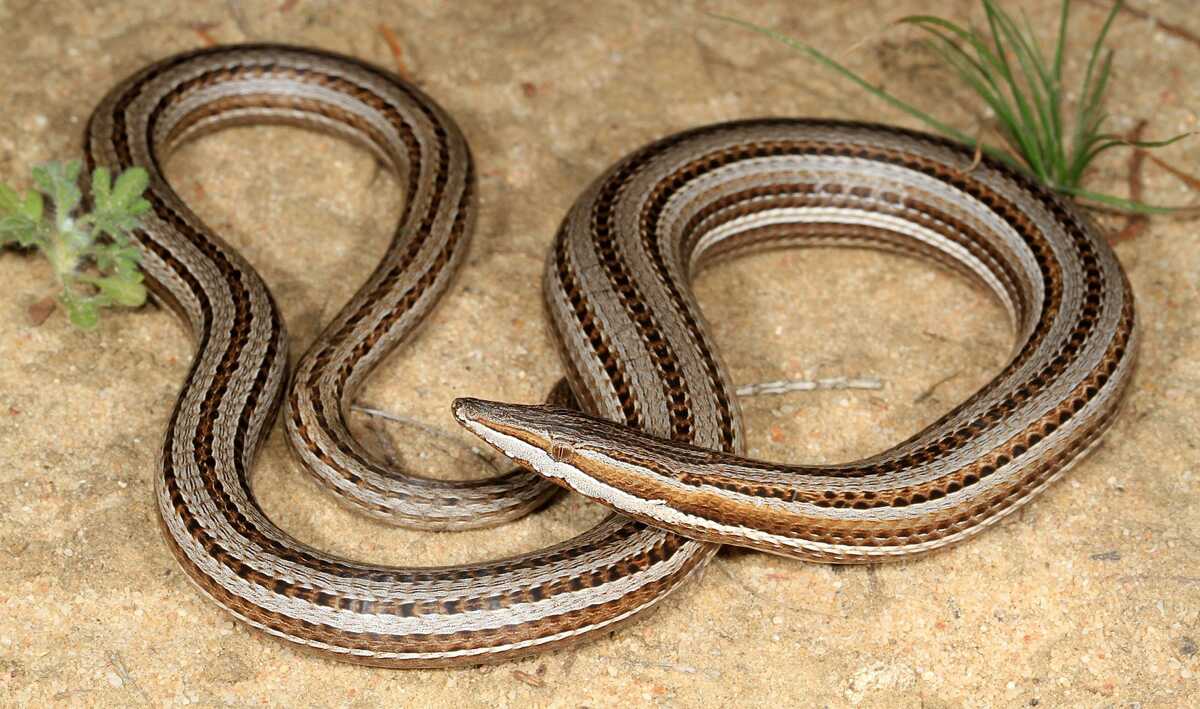
(Paradelma orientalis) This lizard endemic to Queensland. It is about 16 cm long and has grey to greyish-brown body, cream to pale brown base of the head, and a distinctive black bar across the backside of the neck. It has a round snout, prominent ear openings, fairly large limb-flaps, and a tail that is twice the length of the body. A distinctive black bar crosses the backside of the neck. It lives on sandstone ridges and in open forests and woodlands.
(Chlamydosaurus kingii) Also known as frill-necked lizard, frilled dragon, or frilled agama, this lizard is endemic to northern Australia and southern New Guinea. Its name comes from the large bright orange and red frill around its neck that it raises when frightened. It is about 85 cm long (with the tail) and of brown or grey colouration (its colouration is adapted to the environment it lives in) with darker spots and blotches which gives it the appearance of tree bark. It feeds on insects and small vertebrates.
Image by Matt
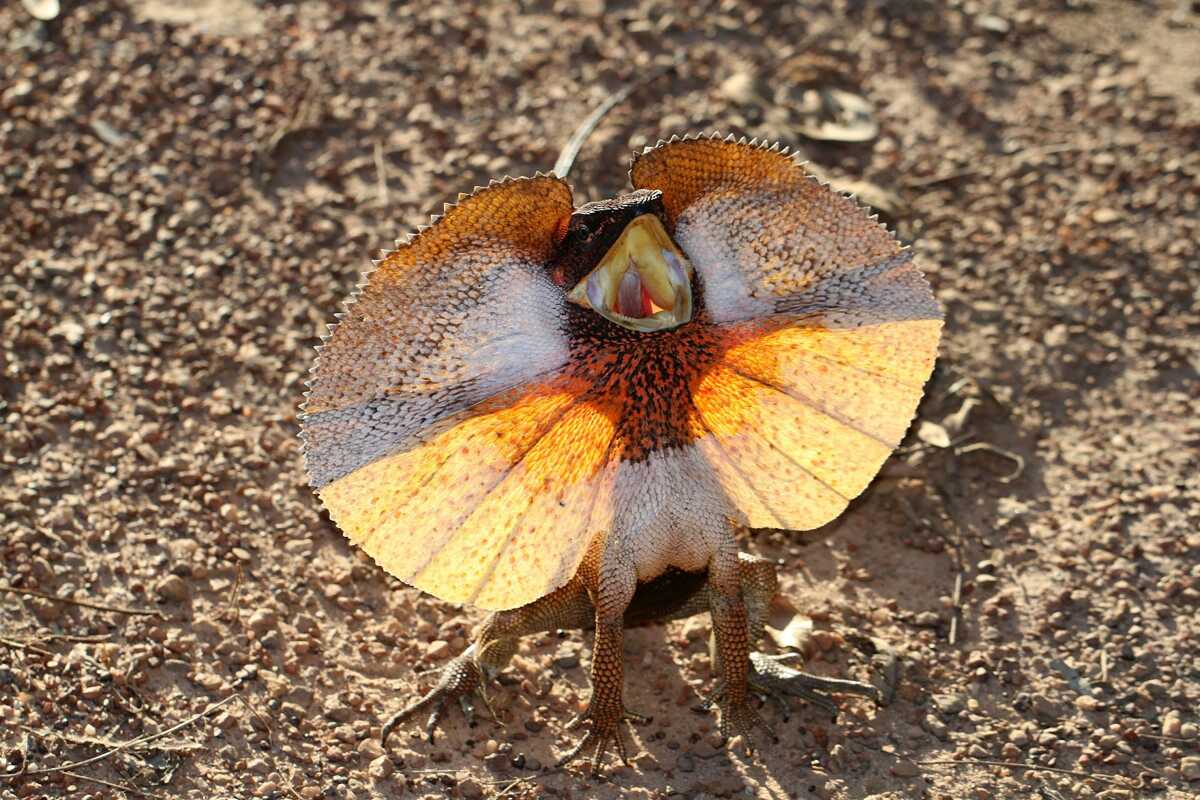
(Intellagama lesueurii) This dragon is native to eastern Australia from Victoria northwards to Queensland. It is about 60-100 cm long (with tail) with long powerful limbs and claws for climbing, a long laterally-compressed tail, and prominent spikes at the base of the head that continue down the spine, getting smaller as they reach the base of the tail.
Image by Quartl

(Pogona barbata) Also known as eastern bearded dragon or bearded lizard and is found in wooded parts of Australia. It is about 50-60 cm long (with tail) and has grey-black or red skin with spiny, dark grey scales on the throat that can be raised to form an impressive "beard". It has a large and triangular head, several groups of long spiny scales at the back of the head, the corners of the mouth, the external ear openings, and running posteriorly along both sides of the abdomen.
Image by DiverDave
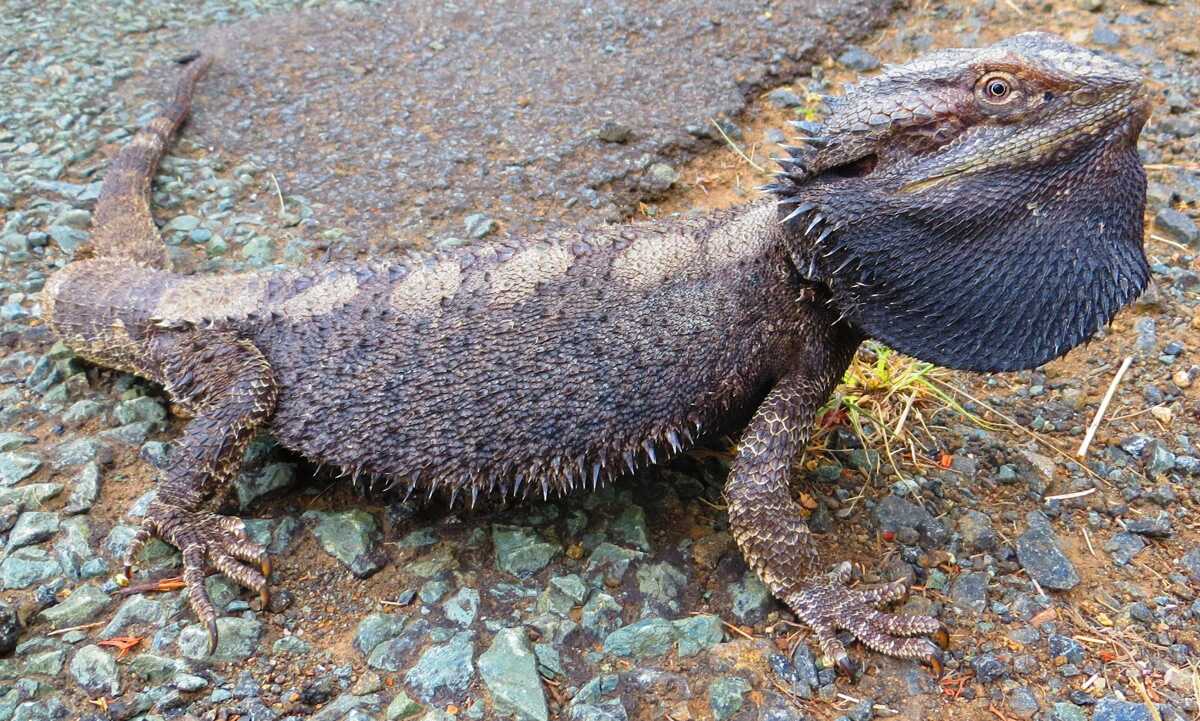
(Varanus varius) This lizard is native to eastern Australia. It can reach up to 2 m in length with long tail that reaches 1.5 times the length of the head and body.
Image by Peter Firminger

(Anilios proximus) This snake is native to eastern Australia. It is about 50 cm long with dark brown and glossy scales, very small eyes, bluntly trilobed snout, and no noticeable head. It can be mistaken for earthworm.
(Morelia spilota) This large snake is 2-4 m long with a triangular head with a conspicuous row of thermoreceptive labial pits. Its colours can range from olive to black with white or cream and gold markings. Its patterns can be roughly diamond-shaped or have intricate markings made up of light and dark bands on a background of gray or brown.
Image by Amos T Fairchild
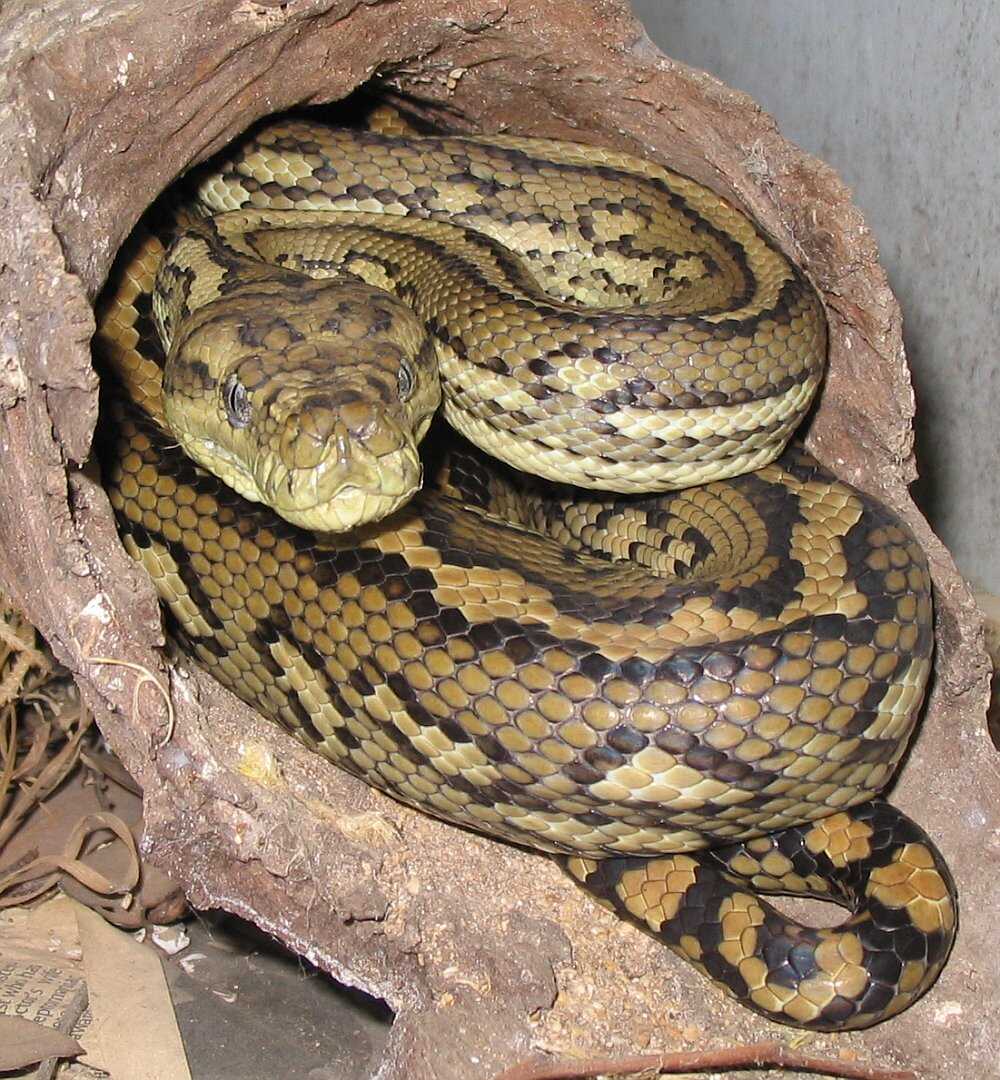
(Dendrelaphis punctulatus) This slender, large-eyed, mildly venomous snake is native to many parts of Australia and Papua New Guinea. It can be up to 164 cm long with green to olive-green to black dorsal scales, pale yellow throat and belly and blue flecks on the flanks.
Image by Charles Girard
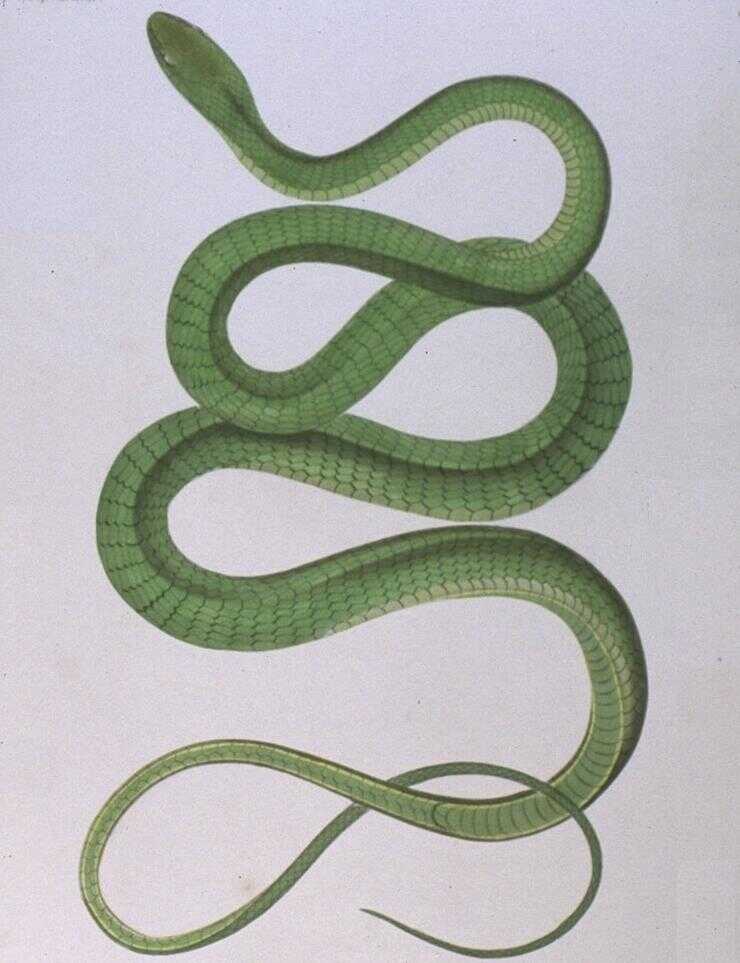
(Demansia psammophis) This slender and fast-moving snake is active during the day. Its is about 80 cm long and of pale grey to brown colour, reddish colouring on the head, grey-green to yellowish belly, yellowish face with a narrow, yellow-edged bar around the front of the snout from nostril to nostril. The average length is 80cm, with a maximum of 1m. It can be confused for Eastern Brown by it has different facial markings, and is smaller.
Image by Aviceda
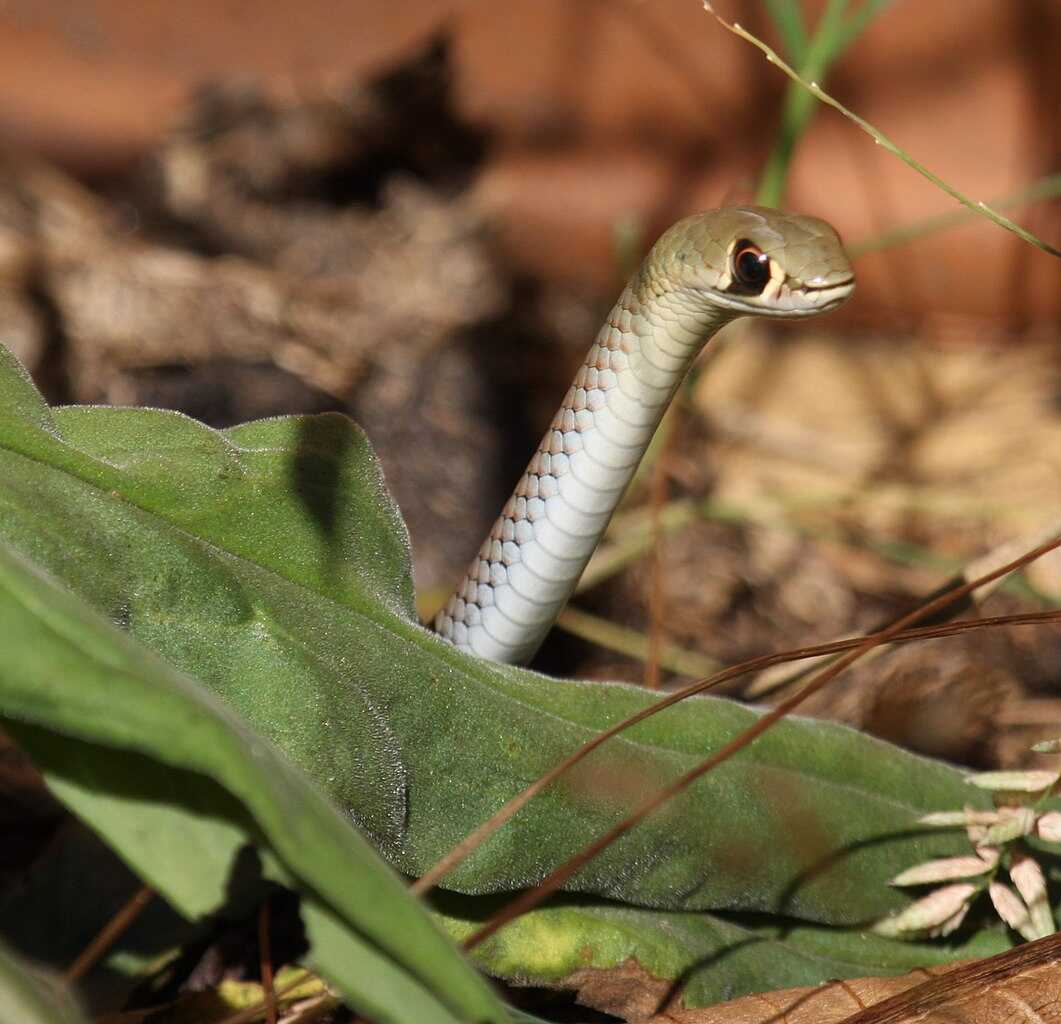
(Pseudechis porphyriacus) This venomous snake is endemic to Australia. It grows around 1.25 m in length with glossy black upperparts, bright red or orange flanks, and a pink or dull red belly. The snake generally avoids encounters with people and is commonly found in woodlands, forests, and swamplands.
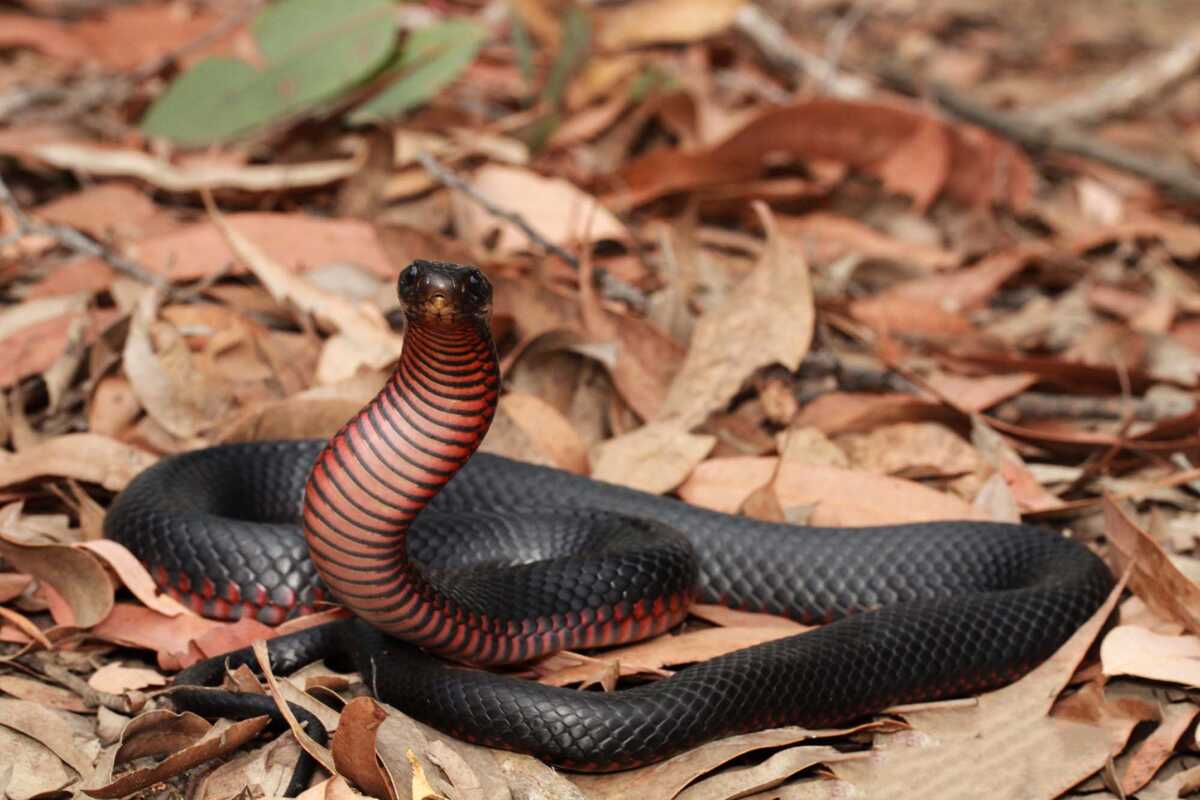
(Pseudonaja textilis) Also known as common brown snake, this highly venomous snake is native to eastern and central Australia and southern New Guinea. It is up to 1.5 m long, pale brown to almost black, with pale cream-yellow belly and often with orange or grey splotches. It has small fangs and a dark tongue.
Image by Poyt448 Peter Woodard
